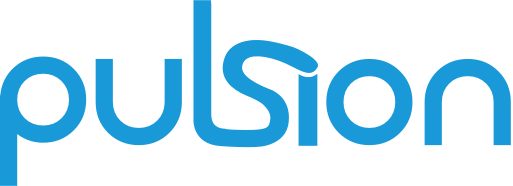In this guide we explore the considerations which should be taken into account when deciding if custom software development is the best option for your business.
What is Custom Software Development?
The process of designing, building, deploying, and supporting software specifically for a group of users, tasks, or organisations is known as custom software development. In contrast to commercial off-the-shelf software, custom software development focuses on meeting a specific set of requirements. An example of commercial off-the-shelf software would be Microsoft Office which meets general needs for office productivity whereas, custom software such as an online banking system is created for the specific needs of the bank and their clients.
Our recent blog post, ‘Why You Should Consider Custom Software Solutions‘ highlights the benefits of using custom software solutions.
Define Your Current Process and Future Needs
When building custom software it is essential to analyse your current processes and how they can be improved for your future needs. At the early stages of development you should take a high level view and reflect on your businesses operations by asking the following questions:
- What are you trying to achieve?
- How can software help you achieve those goals?
Having a clear goal of what you want to achieve for your business at the outset enables you to identify the changes you need to implement to reach that goal.
By analysing current procedures you can determine areas you want to improve and build upon. At this stage it could be beneficial to enlist the help of an external consultant who can view things objectively with no prior knowledge of the organisation. The purpose is to obtain as much information as you can in order to know which issues you are attempting to address in the organisation and if custom software will be the most appropriate option to address those issues or is there a commercial off-the-shelf product which can fulfil your needs? Remember to not automatically assume new things are better. Request feedback from stakeholders at all levels to test the theory. If you decide to develop custom software you will need to decide who to work with.
Choosing the Right People to Work With
For developing custom software you may have an in house software team who will, by default, develop the solution or you may engage a software development company to implement the system. Every software development firm is slightly unique. Finding a team that is a suitable fit for your custom software development project is what matters most. You should take into account the team’s cultural makeup in addition to its technical skill sets. Spend some time contrasting and weighing your possibilities. Read more on the factors you should consider when choosing a software development company in one of our previous blogs, ‘How To Choose a Software Development Company.’
Discovery Phase
The objective of the Discovery Phase is to determine how it’s best to achieve the businesses goals. Once you have the initial decision of what the project needs to achieve then it is time to set out the detailed requirements. Requirements gathering is the process of understanding what you are trying to build and why you are building it. Requirements are the basis of any project, and the quality of those requirements has the power to make or break the project. The requirements gathering process is an essential part of custom software development, if you get it wrong it can result in a lot of wasted time and money. 1 in 6 ICT projects have an average overrun of 200%, which can be traced back to poor requirements.
There can often be a misunderstanding between stakeholders in custom software development as assumptions can be made and details are missed.
Projects have a significant chance of failure without careful consideration and planning at the start. The process of performing discovery can have three phases:
Discussion
During the discussion phase, you need to fully comprehend what you want to achieve for your business. As mentioned before it is often most effective to start with your end goal and work your way backwards to how you will achieve it.
Investigation
During the investigation there is a thorough examination of what drives your company’s processes and an evaluation of alternative solutions to help you decide what’s best for your company. At this point, you begin to gather and document the requirements to achieve the intended outcome explained under the discussion piece.
Solution
In the third and final stage the solution is fully defined. At this point the requirements will have been determined and this will allow a project plan to be produced. Following this the project team, implementation strategy and time-frames will be decided. This will act as a good point of reference for all stakeholders.
This is also an opportunity for customers to visualise what the system will look like through the use of wireframes. A wireframe is a schematic or blueprint that can be used to facilitate communication between programmers, designers regarding the organisational layout of the software of what’s being developed. The use of wireframes throughout the custom software development process allows customers to see how their project is taking shape.
Work on development should not begin until sign-off on the agreed requirements is settled.
System Design
The technical architecture of the product is designed in this phase. During which, the team builds items such as the product’s architecture, workflow diagrams, tech stacks, and database designs while also providing the technical teams with the business specification. The items define the blueprints for the actual implementation of the system.
Development and Coding
This is the phase where developers actually begin coding. As everyone is agreed on the proposed functionality and design of the system, development can start.
In the context of software development, coding refers to the process of writing the source code for a computer program or application. This involves using a specific programming language, such as Java, Python, or C++, to create the instructions that the computer will use to perform the desired tasks.
Coding and development can involve a wide range of tasks and skills, depending on the specific project and the technology being used. This may include working with databases, APIs, user interfaces, and other technologies, as well as collaborating with other team members and stakeholders.
Testing
Once software is written it must be tested to ensure it meets the criteria set out in the requirements. The software is tested throughout for accuracy, performance, and quality as part of the process of software development. Software testing is performed to make sure that expected product features operate as intended.
There are several forms of testing:
Unit Testing
To ensure that the individual components of the software are functioning as planned developers will write unit tests. Unit tests are run automatically and ensure that a component meets it’s designed criteria. Since they run automatically and they are particularly useful to make sure that any changes to a component during development does not cause errors. Some teams set coverage objectives for their unit tests. Coverage defines the percentage of code tested, and if a particular percentage coverage is not met then a build will fail. Non-developers may ask why not set the coverage at 100% but the issue is that it is not possible to test any code other than trivial example to 100% due to the complexity of software.
Integration Testing
Unit testing checks that the internal functionality of a particular component works whereas integration testing validates whether it interfaces as expected with other components of the system. Generally when software systems are defined an interface is designed for each component so components understand how they can interact with each other. Integration testing checks these interfaces meet their specification and work as expected.
Functionality Testing
Functional testing checks the overall features of the software function correctly. For example if you create an invoice in an accounting system you would want to test if the invoice saved correctly with all data. Functional testing tests that the tasks for which the software is designed can be performed. As well as this functional testing will check that errors are shown correctly when erroneous data is entered or other failures (e.g. no Internet connection) occur.
Performance, Reliability and Penetration Testing
Other forms of testing can also be performed which generally cover non-functional requirements. Non-functional requirements are attributes of the system which are not covered in features. For example the system must generate a monthly audit report in under 2 seconds.
Performance testing checks that the system can run at the level defined in the requirements. This could be handling a number of user request with a particular response time to any requests.
Penetration testing involves trying to gain access to a software system or data without authorization. This type of testing ensures that software system meet security requirements.
Reliability testing may check that the system is available to user to a particular level (e.g. 99.9999% of the time). Reliability testing can be done by forcing machines or service to fail to check that the system is still available. In large, mission critical or safety critical systems this can be particularly important.
User Acceptance Testing
User acceptance testing (UAT) is where the stakeholders or their testing representatives check that the delivered system meets the requirements of the stakeholders. It could be argued that if functional testing has been done then why is user acceptance testing required ? The answer is that functional testing is performed by testers in the development team. They may have misunderstood requirements so testing by a stakeholder lead team ensure the system meets the requirements as understood by the stakeholders.
Support and Maintenance
Businesses must design software applications as efficiently as possible while minimising errors and issues. Despite the best efforts to eliminate errors. Every developed application needs ongoing support and maintenance to fix issues which arise when the software is released. Support and maintenance can involve fixing bugs found by users of the system but it can also include applying fixes to third party software components due to discovered security vulnerabilities.
Support and maintenance ensures that once a system is live that it can continue to serve it’s user base in the manner intended.
Conclusion
A thorough project plan with detailed requirements, are necessary for a successful custom software development project. In order to deliver the required product strong collaboration between the client and the programmers is important at all stages of the process. Understanding the processes outlined in this guide guarantees that you stay clear of frequent traps that could delay or cost money in the product’s development.
Learn more about the digital transformation solutions provided at Pulsion. Our team has extensive experience in cloud migration, custom software development, mobile app development and artificial intelligence solutions. This ensures we are perfectly placed to understand your project and offer the most appropriate solution. Partnerships with Amazon Web Services and Microsoft ensures we are able to offer the best technology solution for your needs.
We would be happy to discuss your digital needs with you, it’s what we do, so get in touch!




